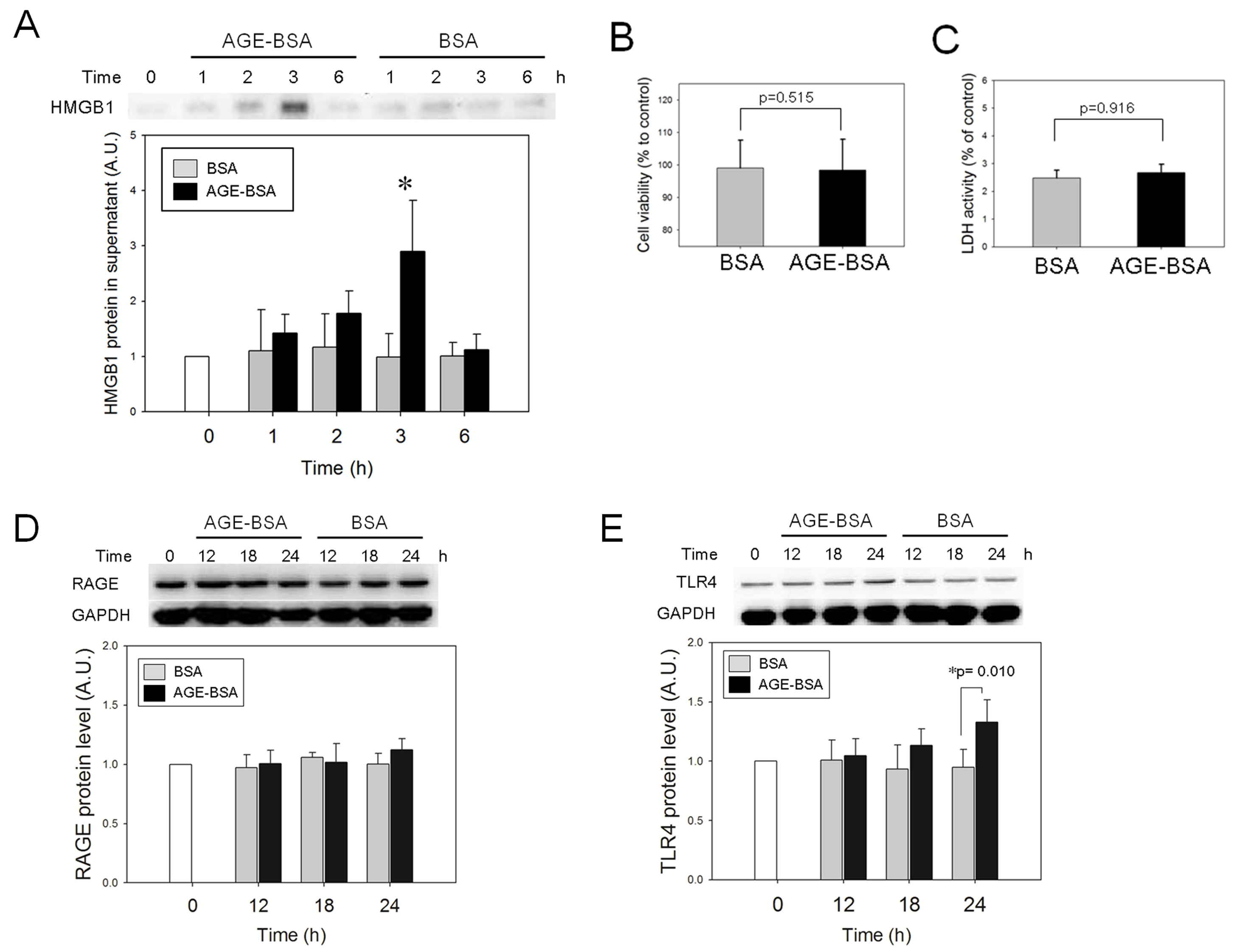Figure 3. Advanced glycation end
products–BSA (AGE-BSA) treatment results in the release of
high-mobility group box protein 1 (HMGB1) from retinal ganglion
cell (RGC)-5 cells. A: HMGB1 in the culture media after
treatment of RGC-5 cells with 200 μg/ml of AGE-BSA or BSA alone
was detected by western blot analysis. The release of HMGB1 into
the media reached significance at 3 h after treatment with
AGE-BSA, compared to the BSA control (n=4, * p<0.05;
A.U.represents arbitrary unit). B: XTT test and (C)
lactate dehydrogenase (LDH) assay conducted after incubation of
RGC-5 cells with 200 μg/ml of AGE-BSA or BSA alone for 24 h. No
significant difference was found between groups (n=6, p=0.515
for XTT and p=0.916 for the LDH test). D: RAGE and (E)
TLR4 protein levels were assayed with western blot analysis. The
levels of RAGE in the RGC-5 were not different between groups
over time. However, a mild but significant increase in the TLR4
protein was detected after AGE-BSA treatment at 24 h (n=5,
p=0.010).

 Figure 3
of Lee, Mol Vis 2012; 18:838-850.
Figure 3
of Lee, Mol Vis 2012; 18:838-850.  Figure 3
of Lee, Mol Vis 2012; 18:838-850.
Figure 3
of Lee, Mol Vis 2012; 18:838-850. 